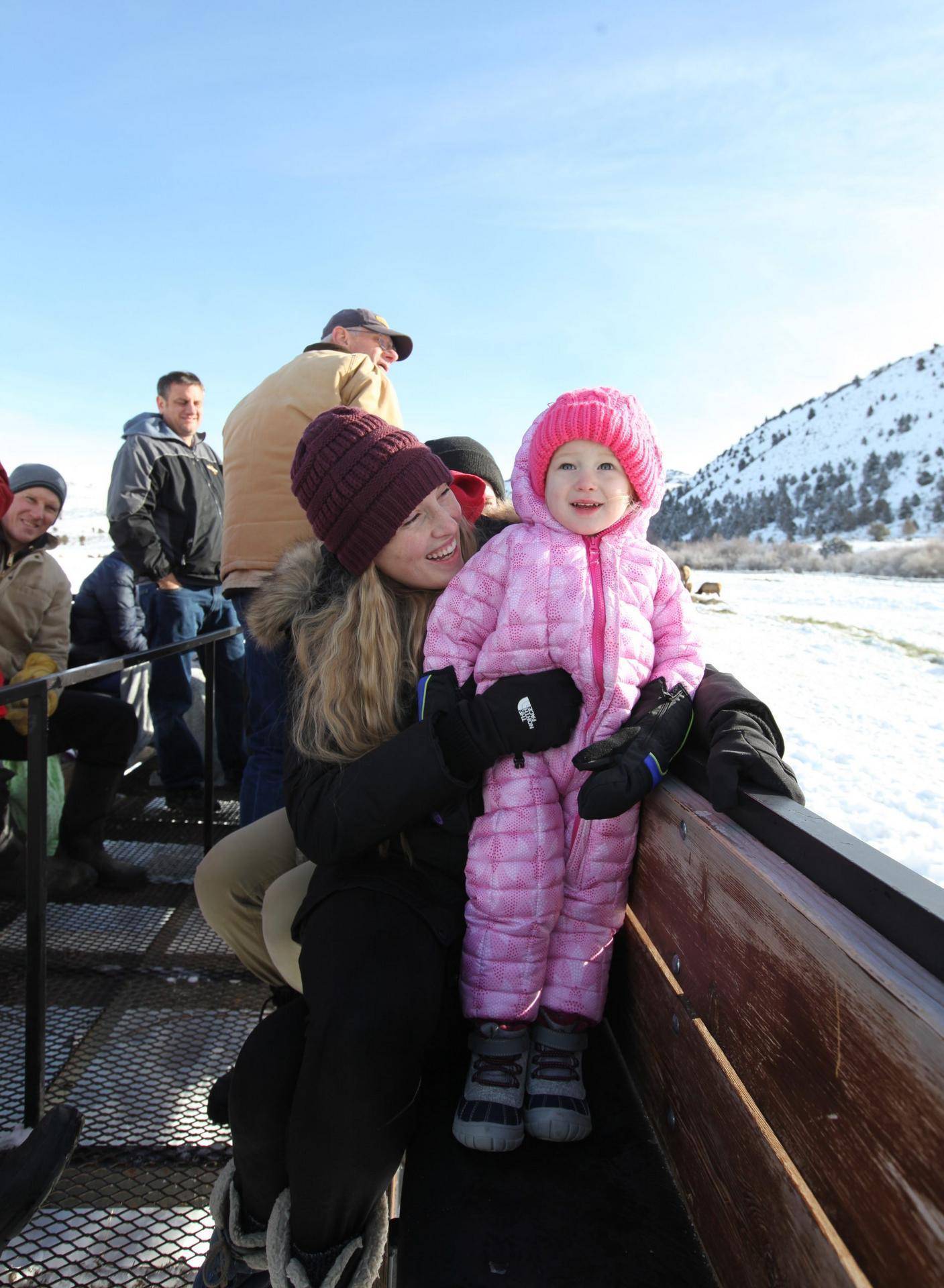DWR News Release
It’s been two winters since horse-drawn sleigh and wagon rides were offered through the middle of hundreds of wild elk at the Hardware Wildlife Management Area. Starting Dec. 2, the rides are back!
COVID-19 concerns canceled the rides in 2020, and the popular activity was again canceled last year due to extreme drought conditions impacting the hay production on the wildlife management area. (Hay is needed to feed the elk during the winter months.)
This year, Haviland’s Old West Adventures, a long-time business in Cache County, will offer the rides on Fridays, Saturdays and Sundays. Starting Dec. 2, rides will be offered every weekend through Feb. 12. Rides start at 10 a.m. and end at 4:30 p.m. each day.
“We’re excited to be able to offer the sleigh rides again at the Hardware WMA and to have Haviland’s as our partner in these efforts,” Utah Division of Wildlife Resources Hardware WMA Manager Brad Hunt said. “We know they’ll do a great job.”
Each ride lasts about 40 minutes. The fee to go on a ride is $10 for those nine years of age or older and $4 for those four to eight years old. Those three years of age or younger ride for free.
Because this is the first time since 2019 that the rides will be offered, there will likely be large crowds this winter. If you’d like to spend less time in line for a ride, consider visiting the WMA on a Sunday.
“Fewer people visit the WMA on Sundays, so you can typically get on a sleigh faster,” Hunt said.
In addition to the sleigh rides, you can buy lunch from a food trailer that Haviland’s will have on site.
The Hardware WMA is 16 miles east of Hyrum. You can reach the WMA by traveling on state Route 101 through scenic Blacksmith Fork Canyon.
For more information, visit the DWR website. You can also call the wildlife management area at (435) 753-6206 or email Hunt at bradhunt@utah.gov.
Activities and displays
In addition to riding through the middle of hundreds of wild elk, you can learn more about wildlife and the WMA at the Hardware Wildlife Education Center.
Activities for families will be held in the center at 11 a.m., noon, 1 p.m. and 2 p.m. on Fridays, Saturdays and Sundays. Each program runs about 30 minutes.
“A very popular activity we’ve held in the past is making Christmas ornaments using sagebrush, bitterbrush and other plants found at the WMA,” said Marni Lee, the DWR’s interpretive director at the center. “We’ll offer that activity in December.”
In addition to the activities, you can learn more about the migration habits of wildlife in Utah by taking a brief walk through the center’s habitat room.
Brucellosis concerns
In the winter, DWR staff feed hay to elk at the WMA to try to keep them from migrating down Blacksmith Fork Canyon into private haystacks in the valley below. This winter, the length of time staff feed the elk will be shorter than it has been in the past.
Brucellosis, a disease that causes abortions and low fertility rates in animals that contract it, has not been detected in Utah. DWR biologists are concerned, though, that elk migrating back and forth from Utah to areas where brucellosis is found could bring the disease into the state.
Late winter and spring is the time when elk usually transmit the disease to each other. As a precaution, feeding will end on Feb. 12. Ending feeding in early February should disperse the elk and cause them to leave the ranch early. That should reduce the chance that an elk with brucellosis passes the disease to another elk.

